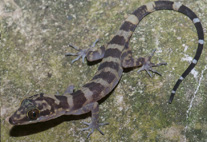Abstract
The Metaphire formosae species group is a member of the Pheretima complex of the family Megascolecidae. It is composed of 12 nominal taxa, Metaphire bununa Tsai et al., 2000, Metaphire feijani Chang & Chen, 2004, Metaphire formosae (Michaelsen, 1922), Metaphire glareosa Tsai et al., 2000, Metaphire nanaoensis Chang & Chen, 2005, Metaphire paiwanna paiwanna Tsai et al., 2000, Metaphire paiwanna hengchunensis (James et al., 2005), Metaphire paiwanna liliumfordi Tsai et al., 2000, Metaphire tahanmonta Chang & Chen, 2005, Metaphire taiwanensis Tsai et al., 2004, Metaphire trutina Tsai et al., 2003, and Metaphire yuhsi (Tsai, 1964). In this study, we describe a new species, Metaphire tengjhihensis sp. nov., and two new subspecies, Metaphire nanaoensis truku ssp. nov. and Metaphire taiwanensis tsaii ssp. nov., belonging to this species group. DNA barcodes (partial sequences of the mitochondrial cytochrome c oxidase subunit 1, COI) from type specimens of M. feijani, M. tengjhihensis sp. nov., M. nanaoensis truku ssp. nov., M. tahanmonta and M. taiwanensis tsaii ssp. nov. have been deposited in GenBank in previous studies and are explicitly linked to the type specimens for the first time, enabling unambiguous identification using both morphology and DNA barcodes. Finally, we comment on the systematics of the M. formosae species group and suggest an integrative taxonomic approach that combines morphology and DNA barcodes for future descriptions of new species of Amynthas and Metaphire.

